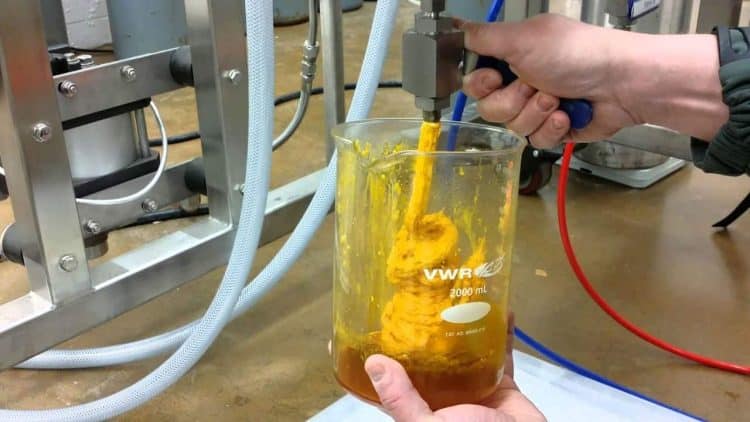The clamor for cannabis concentrates isn’t dying down. Dispensary shelves are packed with potent, cannabinoid-rich extracts. Supercritical carbon dioxide (CO2) extractions are more common, but there are actually two different methods available to professional laboratories. Subcritical CO2 extractions are possible as well. Each strategy has its own advantages.
Subcritical vs. Supercritical CO2
CO2 can be manipulated through pressure and temperature to act as a solvent and strip valuable terpenes and cannabinoids from the plant material. A solvent is “supercritical” if it has the properties of both a gas and a liquid at the same time.
CO2 enters a supercritical state when it’s heated above 31.10°C and reaches pressures above 1,071 psi. Manufacturers, however, often work with much higher inputs than that.
According to Mark June-Wells, Ph.D., principal owner of Sativum Consulting Group: “[The] ability to target or separate solutes from a mixture is the most valuable feature of [supercritical] CO2 extraction. Other beneficial features of carbon dioxide extractions include the fact that it is generally regarded as safe (i.e., high exposure limits), it is relatively cheap, and it is available in high purity from numerous sources.”
The same process applies to subcritical CO2 extractions. However, lower temperatures and less pressure are required. The method is less efficient and more time-consuming. Pressure is applied to CO2 while the temperature is lowered. The gas converts into a non-supercritical liquid.5
Subcritical extractions are useful if you want to maintain the plant’s terpenes, which are sensitive to heat degradation. These highly volatile compounds, especially monoterpenes, can be degraded during the supercritical extraction process. [1]
References:
[1] Sexton, M. et al. “Evaluation of Cannabinoid and Terpenoid Content: Cannabis Flower Compared to Supercritical CO2 Concentrate”, Planta Med, 2018, Volume 84(04): Pages 234-241. [journal impact factor = 2.342; cited by 10]
Image Source: Eden Labs












